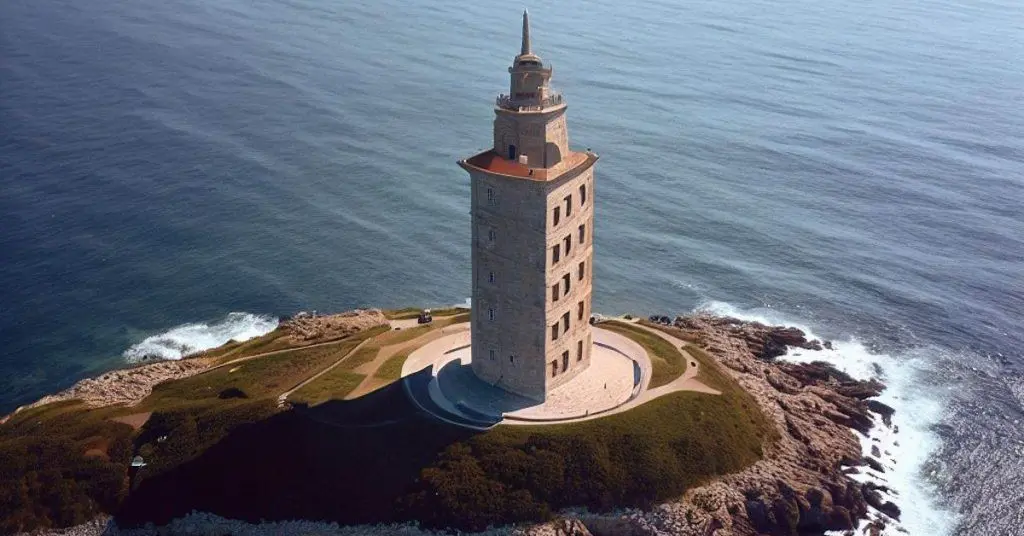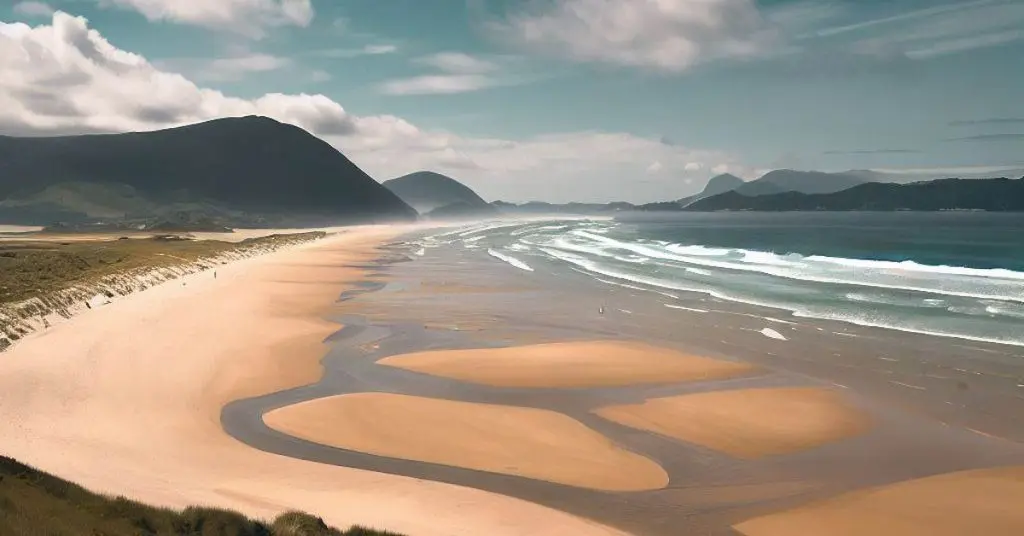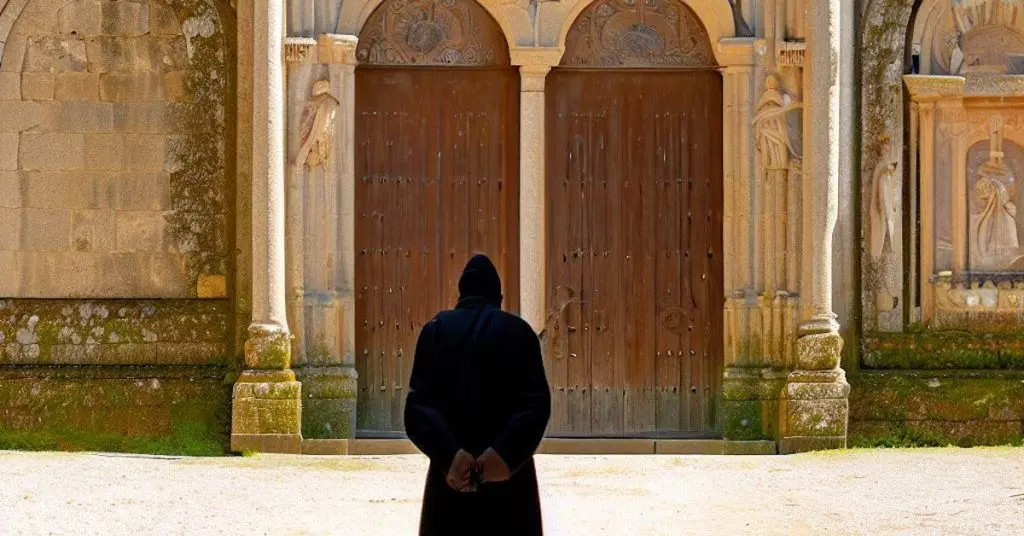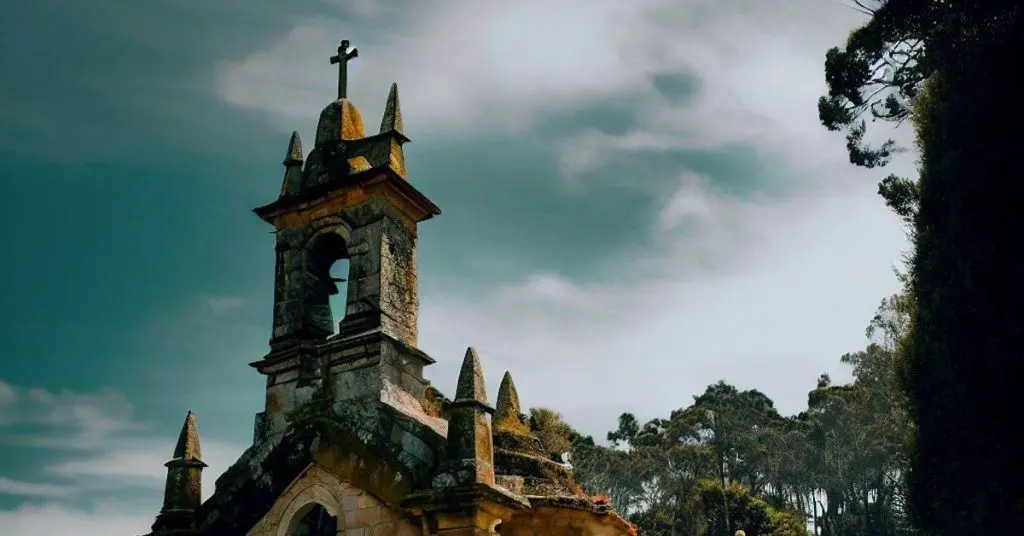
Discover the Hidden Gems of The Camino Inglés
Posted: | Updated:
Reading time: 17 minutes
Discover the Hidden Gems of The Camino Inglés
Posted: | Updated:
Reading time: 17 minutes
By: Simon Kemp, Editor
Lesser Known Secrets of The Camino Inglés
If you’re looking for a lesser-known pilgrimage route with hidden gems, the Camino Inglés may be just what you need. Unlike its more popular counterparts like the Camino Frances, the Camino Inglés offers a quieter and more intimate experience, with unique cultural and historical landmarks along the way. In this article, we’ll take a closer look at the hidden gems of Camino Inglés, exploring the lesser-known aspects of this historic route.
Key Takeaways
- The Camino Inglés is a less traveled route that offers a unique and historic experience, with hidden gems for pilgrims to discover.
- Historical gems on the route include the town of Ferrol, the Tower of Hercules, and monasteries with significant historical significance.
- Natural gems include the stunning beaches and rugged coastline, lighthouses with breathtaking views, scenic routes and trails off the beaten path, and unique flora and fauna.
- Cultural gems include traditional Galician cuisine, music, dance, celebrations, festivals, art, and architecture unique to the region.
- The Camino Inglés offers a spiritual journey with significant spiritual sites and monuments along the route, and the spiritual significance of nature and the landscape.
- Pilgrims can find hidden gems along the route, including lesser-known albergues and accommodation options, secret spots for rest and rejuvenation, and off-the-beaten-path experiences for a more unique pilgrimage.
- The unique experience of the Camino Inglés offers a chance for exploration and discovery of these hidden gems, encouraging pilgrims to take their time and enjoy the journey
The Camino Inglés, also known as the English Way, is a sacred path beginning in the coastal city of Ferrol, situated in the picturesque northwestern area of Galicia, Spain. Historically, this trail was favored by English and Irish pilgrims who sailed to the harbor of Ferrol before proceeding on foot towards the revered Santiago de Compostela. Today, the Camino Inglés is a popular alternative for those seeking a quieter and more off-the-beaten-path pilgrimage experience.
The Camino Inglés has a rich history that dates back to the 12th century when English and Irish pilgrims began traveling to Santiago de Compostela by sea. The route was also used by soldiers and merchants traveling between England and Spain. Today, the Camino Inglés is a popular pilgrimage route for those seeking a quieter and more off-the-beaten-path experience.
We hope to introduce you to the hidden gems of the Camino Inglés, showcasing the unique cultural and historical landmarks along the way. No matter if you’re a well-traveled pilgrim or just embarking on your spiritual quest, the Camino Inglés promises a truly unique and unforgettable adventure. So grab your backpack, lace up your boots, and join us on a journey of discovery along the Camino Inglés.
Must-See Sights Along The Camino Inglés
Tower of Hercules
One of the hidden gems of Camino Inglés is the Tower of Hercules , a UNESCO World Heritage site located in the city of A Coruña. Constructed by the Romans in the 2nd century, this age-old lighthouse still operates today, providing breathtaking sights of the Galician coast.
Betanzos
The medieval town of Betanzos is another hidden gem on the Camino Inglés. With its narrow streets and charming plazas, Betanzos offers a glimpse into the rich history of Galicia. Don’t miss the Church of Santa María do Azogue, with its beautiful Romanesque façade.
Fragas do Eume
For nature lovers, Fragas do Eume is a must-see on the Camino Inglés. Nestled near the quaint town of Pontedeume, this vibrant and green forest teems with life, hosting an array of plants and animals such as deer, wild boars, and majestic eagles.
Santiago de Compostela
While not exactly a hidden gem, Santiago de Compostela is the ultimate destination of the Camino Inglés and certainly worth exploring. This charming city boasts the awe-inspiring Santiago de Compostela Cathedral, a sacred site where the relics of St. James the Apostle are enshrined. The city’s narrow streets and charming plazas are perfect for exploring on foot.
Historical Gems
The Camino Inglés is a treasure trove for history buffs who are looking for a unique and historic experience. With its charming towns, beautiful monasteries, and ancient lighthouses, the Camino Inglés offers a wealth of historical sites that are just waiting to be explored.
If you’re interested in history, the Camino Inglés is a must-walk route. So, pack your bags and embark on this unforgettable journey, where you can discover the secrets of the Camino Inglés. This less traveled route is full of hidden historical gems that are just waiting to be explored. Here are some of the top historical sites along the Camino Inglés:
Detailed description of the historic town of Ferrol
The Camino Inglés starts in the historic town of Ferrol, a city that was once a major naval base for the Spanish Armada. With a storied past that reaches back to the 16th century, Ferrol’s charming streets are adorned with exquisite Spanish Baroque architectural masterpieces. Visitors can explore the San Francisco and La Merced churches, the Castillo de San Felipe, and the impressive Naval Museum.
The Tower of Hercules and its significance
One of the most iconic historical sites along the Camino Inglés is the Tower of Hercules. Believed to be the world’s oldest operational lighthouse, this remarkable beacon has stood the test of time since its origins in the Roman era. The tower stands at an impressive height of 55 meters and offers stunning views of the surrounding coast. Being a UNESCO World Heritage Site, this mesmerizing landmark is an essential stop for those passionate about history and architecture.

Monasteries and their historical significance
While traveling along the Camino Inglés, you’ll come across a number of ancient monasteries, each boasting its own distinct history and architectural style. Among the most remarkable is the 10th-century Monastery of San Martiño de Xubia. This beautiful monastery is a hidden gem along the Camino Inglés, and visitors can marvel at its stunning architecture and rich history.
Other lesser-known historical sites along the Camino Inglés
Along the Camino Inglés, there are several other lesser-known historical sites that are worth exploring. These include the charming town of Betanzos, which boasts a beautiful medieval center and impressive Gothic churches. The historic village of Pontedeume is also worth a visit, with its beautiful castle and narrow winding streets.
The purpose of exploring these hidden historical gems along the Camino Inglés is to add depth to your journey and to understand the cultural and historical significance of the route. By venturing off the beaten path to discover these hidden gems, you’ll develop a more profound connection with the Camino Inglés and the abundant history of the Galicia region.
Natural Gems
The Camino Inglés is not just a route filled with history and culture; it also boasts breathtaking natural beauty that is sure to leave any pilgrim in awe. From stunning beaches to scenic routes, the natural gems along this route are a must-see. If you’re an outdoor enthusiast, history aficionado, or simply seeking a distinctive and memorable adventure, the Camino Inglés has a little something for ever. From traditional cuisine to local festivals, traditional music and dance, and unique art and architecture, the Camino Inglés is full of cultural gems waiting to be discovered. Be sure to experience the rich culture of Galicia on your Camino journey.
The stunning beaches and rugged coastline
The Camino Inglés stretches along the coast of northern Spain, offering stunning views of the Atlantic Ocean. The beautiful beaches that line the coast on the way are extraordinary. From the tranquil coves of Doniños to the long sandy beaches of Valdoviño, the Camino Inglés offers a variety of coastal landscapes to explore. Take a dip in the refreshing water or simply relax on the sandy shores.

Lighthouses with breathtaking views
Along the coast, the Camino Inglés passes by a number of historic lighthouses that offer breathtaking views of the ocean and surrounding countryside. The Tower of Hercules, an awe-inspiring lighthouse and UNESCO World Heritage site, holds the esteemed reputation of being the world’s oldest continually operating beacon. The tower dates back to Roman times and stands at an impressive height of 55 meters. You can climb right to the top of the tower to take in unique views of the coastal and surrounding areas.
Scenic routes and trails off the beaten path
The Camino Inglés offers a variety of scenic trails that take you off the beaten track and deep into the heart of the Spanish coastal countryside. One of the most picturesque routes is the Ruta de las Rías Altas, a 200-kilometer endurance trail that winds along the rugged coastline, through lush forests and past quaint, medieval villages. The Ruta de las Rías Altas has incredible views of the Galician countryside and is a must-see for any nature lover.
Unique flora and fauna
The Camino Inglés hosts an incredible array of distinctive plants and animals that are truly one-of-a-kind. This trail winds through several nature reserves and protected zones, providing sanctuary to rare and endangered species. Be on the lookout for the resilient Galician horse, a remarkable breed with centuries of lineage in the region. You may also spot the Iberian wolf, one of the most elusive predators in Europe.
Cultural Gems
The Camino Inglés is not only rich in history and natural beauty but also in cultural gems. From traditional cuisine to local festivals, the route offers a wide variety of experiences that are unique to the region.
Traditional Galician Cuisine and Local Delicacies
Galicia is known for its delicious seafood, and the Camino Inglés is no exception. Some of the local specialties include pulpo a la gallega (octopus cooked with paprika and olive oil), caldo gallego (a hearty soup made with beans, potatoes, and pork), and empanadas (a savory pastry filled with meat, fish, or vegetables). Don’t forget to try the local wine, such as Albariño or Ribeiro, which pairs perfectly with the fresh seafood.
Traditional Music and Dance of the Region
The Galician people have a rich musical tradition, and you can experience it firsthand along the Camino Inglés. The gaita, a type of bagpipe, is the most famous instrument in Galicia, and you’re likely to hear it played at festivals and celebrations along the route. Traditional dances, such as the muñeira, are also an important part of the region’s culture.
Celebrations and Festivals Along the Route
The Camino Inglés is dotted with celebrations and festivals throughout the year. One of the largest is the Feast of St. James, which is celebrated every year on 25th July in Santiago de Compostela. The city comes alive with music, dance, and fireworks. Pilgrims gather from all over the world to celebrate the end of their journey. Other festivals along the route include the Carnival of Cariño, the Romería de San Andrés, and the Feast of Our Lady of the Rosary.
Art and Architecture Unique to the Region
The Galician region is home to some of Spain’s most interesting, historical architecture, such as the Tower of Hercules in A Coruña mentiond earlier in this article. You’ll also find numerous Romanesque churches along the Camino Inglés, such as the Church of Santiago in Ferrol and the Church of San Francisco in Pontedeume. In addition to architecture, Galicia is also known for its stunning street art. Look out for public sculpture and art in the cities of A Coruña and Santiago de Compostela.
Spiritual Gems
The Camino Inglés is not only a physical journey, but a spiritual one as well. As this Camino has been a route for pilgrims over centuries, it attracts people from all over the world who seek to connect with themselves and a higher power. In this section, we will explore the spiritual gems of the Camino Inglés.
Significance of the Camino Inglés as a spiritual journey
The Camino Inglés has been a pilgrimage route since the Middle Ages, with many pilgrims seeking spiritual growth and enlightenment. Walking the Camino Inglés is a way to reflect on life, find inner peace, and connect with a higher power. The journey itself is a spiritual experience, with the physical challenges serving as a metaphor for life’s struggles. The spiritual sites, natural wonders, and scenic beauty of the route all contribute to the spiritual experience, making the Camino Inglés a truly special pilgrimage.
Spiritual sites and monuments along the route
One of the most significant spiritual sites on the Camino Inglés is, of course the Santiago de Compostela Cathedral, where tradition has it that the remains of Saint James the Apostle are held. The cathedral is the final destination of the Camino Inglés and serves as a symbol of the journey’s end. Other significant spiritual sites along the route include:
- The Church of Santiago in Ferrol, which marks the beginning of the Camino Inglés
- The Monastery of Sobrado dos Monxes, which was founded in the 10th century and is home to a beautiful Romanesque church
- The Church of Santa Maria in Betanzos, which dates back to the 14th century and features beautiful Gothic architecture
- The Church of San Francisco in Pontedeume, which was built in the 13th century and features beautiful Baroque architecture

The spiritual significance of nature and the landscape
Nature and the landscape play an important role in the spiritual journey of the Camino Inglés. Walking through the beautiful countryside and along the rugged coastline can be a powerful spiritual experience, connecting you with the natural world and a higher power. Some of the most beautiful natural spots along the route include:
- The stunning beaches of the Costa da Morte, which offer a serene and peaceful environment for reflection
- The rolling hills and lush forests of the Galician countryside, which are filled with natural beauty and wildlife
- The rugged cliffs and panoramic views from lighthouses along the coast, which offer a breathtaking perspective of the natural world
Hidden Gems for Pilgrims
The Camino Inglés is a less-traveled route that offers a unique and historic experience. While it may not be as popular as other Camino routes, it has its own hidden gems that make it a truly special journey. Whether you’re looking for unique albergues options, peaceful spots for rest and rejuvenation, or places that most tourists do not get to experience, the Camino Inglés has something to offer for everyone. So why not discover the hidden gems of this beautiful route on your next pilgrimage? Let’s take a look at some of the lesser-known and off-the-beaten-path experiences that await pilgrims on the Camino Inglés.
Lesser-known albergues and accommodation options
One of the alluring charms of the Camino Inglés is that it’s less crowded than some of the more popular Camino routes. This means that there are more opportunities to find hidden gems when it comes to accommodation options. While there are still plenty of traditional albergues along the route, there are also some lesser-known and more interesting hostels that can make your journey a really unique and memorable experience.
One such option is the Casa Rural A Cobacha, located in the small village of O Xistral. This charming guesthouse offers comfortable accommodations and a peaceful atmosphere, with stunning views of the surrounding countryside. Another great option is the Albergue de Bruma, located in the village of Bruma. This cozy and welcoming albergue is run by volunteers and offers a warm and friendly atmosphere, along with comfortable accommodations and delicious home-cooked meals.
Secret spots for rest and rejuvenation
The Camino Inglés offers many opportunities for rest and rejuvenation along the way. There are plenty of traditional rest stops and cafes along the route, but why not look at these less well-known spots that can help make your pilgrimage an even more unique and peaceful experience.
One such spot is the Parque do Pasatempo, located in the town of Betanzos. This beautiful park offers a peaceful and relaxing atmosphere, with scenic walking trails, tranquil ponds, and lush greenery. Another great option is the thermal baths at Cuntis. These natural hot springs provide the perfect opportunity to rest and rejuvenate. Give your your muscles a break after a long day of walking!
Off-the-beaten-path experiences for a more unique pilgrimage
For those looking for a less well traveled experience on the Camino Inglés, there are plenty of secrets to discover. From charming local markets to beautiful historic churches, there’s no shortage of hidden treasures along the way.
One such experience is the weekly market in the town of Ferrol. This busy market offers a chance to immerse yourself in the local produce culture, with a variety of fresh farm foods, handmade crafts, and traditional cooked dishes on offer. Another gem is the church of Santa Maria de Cela, located in the town of Cela. This beautiful church features stunning Gothic architecture and a peaceful and serene atmosphere, making it a perfect spot for reflection and prayer.

In Conclusion
The Camino Inglés is a hidden gem that offers a unique and rewarding experience for pilgrims seeking a lesser-traveled route. From its historic towns and monuments to its natural and spiritual gems, this route offers a variety of hidden gems waiting to be discovered. Throughout this article, we have highlighted the hidden gems of the Camino Inglés, including:
- The historic town of Ferrol
- The Tower of Hercules and its significance
- Monasteries and their historical significance
- The stunning beaches and rugged coastline
- Lighthouses with breathtaking views
- Traditional Galician cuisine and local delicacies
- Spiritual sites and monuments along the route
- Lesser-known albergues and accommodation options
- Secret spots for rest and rejuvenation
- Off-the-beaten-path experiences for a more unique pilgrimage
As a lesser-traveled route, the Camino Inglés offers a quieter and more remote experience for pilgrims seeking a unique journey. Take the time to explore the hidden gems we have discussed along the way. From the historic sites to the natural wonders, immerse yourself in the local culture and traditions!
Final Thoughts
The Camino Inglés offers a unique and unforgettable experience for those seeking a different kind of pilgrimage. Its hidden gems provide a chance for pilgrims to discover something new and create memories that will last a lifetime. We hope this article has inspired you to explore the Camino Inglés and uncover its hidden gems for yourself.
Frequently Asked Questions (FAQ’s)
Q: What is the Camino Inglés?
A: The Camino Inglés is one of the traditional routes of the Camino de Santiago pilgrimage in Spain. It starts in the city of Ferrol in the northwestern region of Galicia and ends in Santiago de Compostela.
Q: How long does it take to walk the Camino Inglés?
A: The Camino Inglés is approximately 116 kilometers long and can be completed in 4-6 days depending on your pace.
Q: What are some historical gems to see along the Camino Inglés?
A: The Camino Inglés has a rich history and features several historical gems, including the town of Ferrol, the Tower of Hercules, and several monasteries along the route.
Q: What are some natural gems to see along the Camino Inglés?
A: The Camino Inglés boasts stunning beaches and rugged coastline, scenic trails, unique flora and fauna, and breathtaking lighthouses.
Q: What are some cultural gems to experience along the Camino Inglés?
A: Travelers on the Camino Inglés can enjoy traditional Galician cuisine, local music and dance, and several festivals and celebrations along the route.
Q: What are some spiritual gems along the Camino Inglés?
A: The Camino Inglés is considered a spiritual journey and features several spiritual sites and monuments, including the Cathedral of Santiago de Compostela.
Q: What are some hidden gems for pilgrims along the Camino Inglés?
A: Pilgrims on the Camino Inglés can discover lesser-known albergues and accommodations, secret spots for rest and rejuvenation, and off-the-beaten-path experiences for a more unique pilgrimage.
Q: What is the best time of year to walk the Camino Inglés?
A: The Camino Inglés can be walked year-round, but the best time to go is during the spring or fall when the weather is mild and the crowds are smaller.
Q: How fit do I need to be to walk the Camino Inglés?
A: The Camino Inglés is a moderate route and can be completed by anyone with a reasonable level of fitness. However, it’s important to train and prepare beforehand to avoid injury and fatigue.
Q: What should I pack for the Camino Inglés?
A: You should pack comfortable walking shoes, lightweight clothing, a backpack, a hat, sunscreen, and a water bottle. Don’t forget to bring any necessary medication, toiletries, and a first-aid kit.
